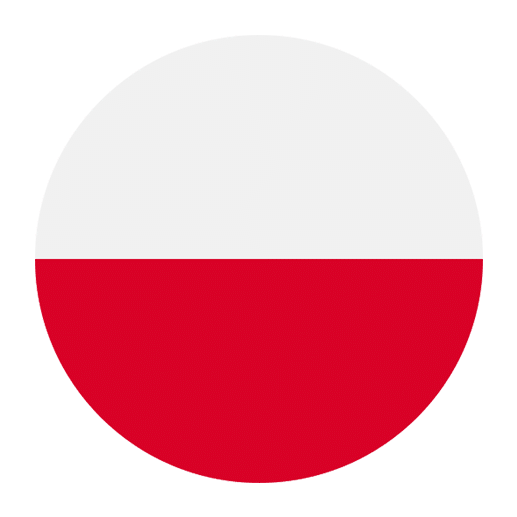Poland, a country steeped in history and culture, is known for its rich linguistic diversity. While the official language is Polish, the nation is home to a variety of regional dialects that reflect its complex historical and cultural tapestry. Understanding these dialects can significantly enhance your appreciation of the Polish language and the nuances of its regional variations. In this article, we will explore some of the most prominent Polish regional dialects, their unique characteristics, and their cultural significance.
Understanding Polish Dialects
Before diving into the specifics, it’s essential to understand what dialects are and how they differ from the standard language. A dialect is a regional or social variety of a language distinguished by pronunciation, grammar, or vocabulary. While dialects can often be mutually intelligible with the standard language, they may include unique words or expressions that are not commonly used outside the region.
Polish dialects are typically categorized into several major groups, each with its own distinctive features. These groups include Greater Polish, Lesser Polish, Masovian, and Silesian, among others. Each of these dialect groups has sub-dialects, further showcasing the linguistic richness of Poland.
Greater Polish Dialect
The Greater Polish dialect, known as “dialekt wielkopolski,” is primarily spoken in the Greater Poland region, including cities like Poznań and Gniezno. This dialect is considered one of the closest to the standard Polish language, but it still has its unique characteristics.
Phonological Features
One of the most notable phonological features of the Greater Polish dialect is the pronunciation of the nasal vowels “ą” and “ę.” In standard Polish, these vowels are pronounced as nasalized, but in the Greater Polish dialect, they are often pronounced as non-nasal vowels, similar to “o” and “e.”
Another phonological distinction is the pronunciation of the consonant “ł.” In standard Polish, “ł” is pronounced as a “w” sound, but in the Greater Polish dialect, it is often pronounced more like the English “l” sound.
Lexical Differences
The Greater Polish dialect also includes some unique vocabulary. For example, the word for “potato” in standard Polish is “ziemniak,” but in the Greater Polish dialect, it is often referred to as “pyra.” Similarly, the word for “bread roll” is “bułka” in standard Polish, but in Greater Polish, it is “rogal.”
Lesser Polish Dialect
The Lesser Polish dialect, or “dialekt małopolski,” is spoken in the Lesser Poland region, including cities like Kraków and Tarnów. This dialect is known for its melodious intonation and distinct phonological and lexical features.
Phonological Features
One of the most distinctive phonological features of the Lesser Polish dialect is the pronunciation of the vowel “y.” In standard Polish, “y” is pronounced as a high, front vowel, but in Lesser Polish, it is often pronounced as a more central vowel, closer to “i.”
Another notable feature is the tendency to palatalize consonants before front vowels. For example, the word “dzień” (day) in standard Polish is pronounced with a palatalized “d,” but in Lesser Polish, it is often pronounced with an even more pronounced palatalization.
Lexical Differences
The Lesser Polish dialect also has its unique vocabulary. For instance, the word for “child” in standard Polish is “dziecko,” but in Lesser Polish, it is often referred to as “bajtel.” Similarly, the word for “water” is “woda” in standard Polish, but in Lesser Polish, it is “wode.”
Masovian Dialect
The Masovian dialect, or “dialekt mazowiecki,” is spoken in the Masovian region, including the capital city of Warsaw. This dialect is characterized by its unique phonological and grammatical features.
Phonological Features
One of the most prominent phonological features of the Masovian dialect is the so-called “mazurzenie,” which refers to the pronunciation of the consonants “sz,” “cz,” “ż,” and “dż” as “s,” “c,” “z,” and “dz,” respectively. For example, the word “szczur” (rat) in standard Polish is pronounced as “scur” in the Masovian dialect.
Another distinctive feature is the tendency to lengthen vowels in certain positions. For example, the word “mama” (mother) in standard Polish is pronounced with short vowels, but in the Masovian dialect, it is often pronounced with lengthened vowels, closer to “maamaa.”
Lexical Differences
The Masovian dialect also includes some unique vocabulary. For example, the word for “potato” in standard Polish is “ziemniak,” but in the Masovian dialect, it is often referred to as “kartofel.” Similarly, the word for “bread” is “chleb” in standard Polish, but in Masovian, it is “chlib.”
Silesian Dialect
The Silesian dialect, or “dialekt śląski,” is spoken in the Silesian region, including cities like Katowice and Gliwice. This dialect is unique in that it is often considered a separate language by some linguists due to its significant differences from standard Polish.
Phonological Features
One of the most distinctive phonological features of the Silesian dialect is the pronunciation of the consonant “r.” In standard Polish, “r” is pronounced as a trilled sound, but in Silesian, it is often pronounced as a uvular sound, similar to the French “r.”
Another notable feature is the pronunciation of the vowel “o.” In standard Polish, “o” is pronounced as a mid-back rounded vowel, but in Silesian, it is often pronounced as a more open, fronted vowel, closer to “a.”
Lexical Differences
The Silesian dialect also has a rich vocabulary that includes many German and Czech loanwords due to the region’s historical ties with Germany and the Czech Republic. For example, the word for “potato” in standard Polish is “ziemniak,” but in Silesian, it is often referred to as “grula.” Similarly, the word for “bread” is “chleb” in standard Polish, but in Silesian, it is “brołt.”
Kashubian Dialect
The Kashubian dialect, or “dialekt kaszubski,” is spoken by the Kashubian people in the Pomeranian region. This dialect is particularly interesting because it is sometimes considered a separate language due to its distinct phonological, grammatical, and lexical features.
Phonological Features
One of the most distinctive phonological features of the Kashubian dialect is the pronunciation of the vowel “e.” In standard Polish, “e” is pronounced as a mid-front vowel, but in Kashubian, it is often pronounced as a more open, central vowel, closer to “a.”
Another notable feature is the pronunciation of the consonant “g.” In standard Polish, “g” is pronounced as a voiced velar stop, but in Kashubian, it is often pronounced as a voiced uvular fricative, similar to the French “r.”
Lexical Differences
The Kashubian dialect also includes a significant number of German and Scandinavian loanwords due to the region’s historical ties with Germany and Scandinavia. For example, the word for “potato” in standard Polish is “ziemniak,” but in Kashubian, it is often referred to as “bulwa.” Similarly, the word for “bread” is “chleb” in standard Polish, but in Kashubian, it is “chléb.”
Podhale Dialect
The Podhale dialect, or “dialekt podhalański,” is spoken in the Podhale region, including the Tatra Mountains and the town of Zakopane. This dialect is known for its unique phonological and lexical features, influenced by the highlander culture of the region.
Phonological Features
One of the most distinctive phonological features of the Podhale dialect is the pronunciation of the consonant “ł.” In standard Polish, “ł” is pronounced as a “w” sound, but in the Podhale dialect, it is often pronounced as a more guttural sound, similar to the English “h.”
Another notable feature is the tendency to nasalize vowels before nasal consonants. For example, the word “kąt” (corner) in standard Polish is pronounced with a nasalized “ą,” but in the Podhale dialect, it is pronounced with an even more pronounced nasalization, closer to “kaąt.”
Lexical Differences
The Podhale dialect also has its unique vocabulary. For instance, the word for “mountain” in standard Polish is “góra,” but in the Podhale dialect, it is often referred to as “hóra.” Similarly, the word for “shepherd” is “pasterz” in standard Polish, but in Podhale, it is “baciar.”
The Cultural Significance of Polish Dialects
Understanding Polish regional dialects is not just about learning different ways of speaking; it is also about appreciating the cultural and historical contexts that have shaped these dialects. Each dialect reflects the unique history, geography, and cultural influences of its region.
For example, the Greater Polish dialect reflects the region’s historical importance as the birthplace of the Polish state. The Lesser Polish dialect, with its melodious intonation, reflects the region’s rich cultural heritage, including the influence of the Kraków dialect. The Masovian dialect, with its distinctive “mazurzenie,” reflects the region’s historical ties with the Mazovian Voivodeship. The Silesian dialect, with its significant German and Czech influences, reflects the region’s complex history of political and cultural ties with Germany and the Czech Republic. The Kashubian dialect, with its unique phonological and lexical features, reflects the region’s historical ties with Germany and Scandinavia. The Podhale dialect, with its distinct highlander influences, reflects the unique culture of the Tatra Mountains region.
Conclusion
Exploring Polish regional dialects offers a fascinating glimpse into the linguistic diversity and cultural richness of Poland. By understanding the unique phonological, grammatical, and lexical features of each dialect, you can gain a deeper appreciation of the Polish language and the cultural contexts that have shaped it. Whether you are a language learner, a linguist, or simply a curious traveler, delving into the world of Polish dialects is sure to enrich your understanding of this beautiful and complex language.

